Kiwi Profile
In the wooded regions of New Zealand, you may stumble across a small, round, brown item, covered in fine hairs and hidden among the leaf litter of the forest floor. They have green flesh, lots of little black seeds, and are commonly eaten with a spoon.
And they have a weird little bird named after them. Kiwi are flightless birds, endemic to New Zealand and the smallest ratite, which also includes ostriches, emus, rheas and cassowaries.
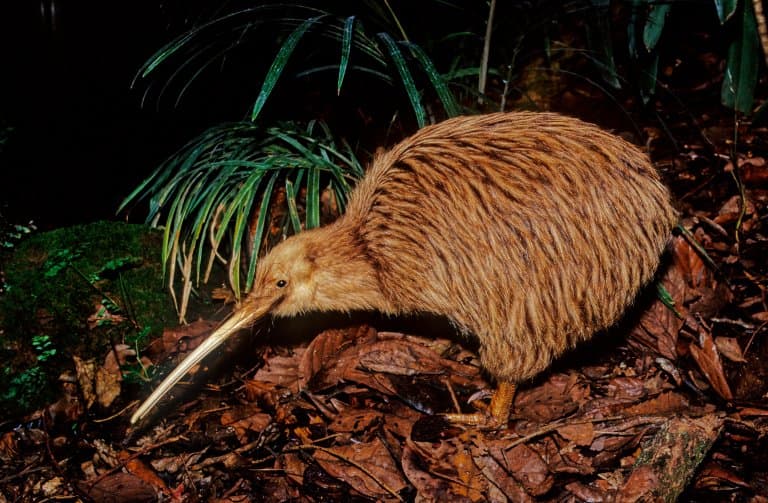
Kiwi Facts Overview
| Habitat: | Forests |
| Location: | New Zealand |
| Lifespan: | Up to 50 years |
| Size: | Up to 45 cm (18 inches) |
| Weight: | Up to 9 lb (4 kg) |
| Color: | Greyish brown |
| Diet: | Leaf litter invertebrates |
| Predators: | Dogs, cats, ferrets, stoats, rats |
| Top Speed: | 20 kph (12 mph) |
| No. of Species: |
5 |
| Conservation Status: |
4 Vulnerable, 1 Near Threatened |
Unlike the fruit, kiwi birds don’t taste very nice. At least not to humans. Sadly, too many other animals disagree, and as such, they’re in significant danger from predators.
Kiwi are sometimes referred to as an honorary mammal, as they have characteristics and habits that are not bird-like.
There are five recongised species of kiwi, four of them are classified as vulnerable and one is near threatened. Kiwi vary in size but are roughly the size of a chicken, with the largest species, the great spotted kiwi, growing up to 45 cm (18 inches), while the smallest around 25 cm (10 inches) in size.
Kiwi are mostly nocturnal, although this is thought to be due to the result of predation, as they are seen in the daytime when in protected areas. They mostly diet on small invertebrates, worms, as well as fruit, berries and seeds on the ground.
These birds are not your typical bird and have a lot of handicaps, but do sport some decent compensatory adaptations that have helped keep them alive this far. While seriously threatened by decline, they are fiesty and intelligent birds, and with some concentrated efforts on the part of conservationists, they should be able to recover.
The kiwi is widely recognized as an icon of New Zealand, and the association is so powerful that the term ‘Kiwi’ is used to describe New Zealanders around the world.
Interesting Kiwi Bird Facts
1. They’re half blind
This is the first of many little quirks of the bird that make it seemingly a very useless animal. But stick around, it gets better!
Kiwis have very poor eyesight. In fact, their eyes are tiny and barely formed. They have clumpy, rudimentary optic lobes, leading to a case of far-sightedness, which, for an animal that hunts insects next to its face, seems like a bad deal.
They’re also colour-blind, which just adds to their ineptitude. 1

2. They are flightless
They’re also lacking in the wing department. Their 2-inch wings are more or less ornamental, and they have no tail, either.
Unable to fly, they’re relegated to the undergrowth, bitterly lamenting the loss of their avian mobility.
3. They have cat-like whiskers, and hair
These are thought to have evolved to help them sense in the dark. Kiwi also have a plumage that’s more like hair, than feathers.
As they are flightless, the texture of their feathers have thought to evolved to suit more of a ground based lifestyle. It’s warm, and shaggy in appearance.
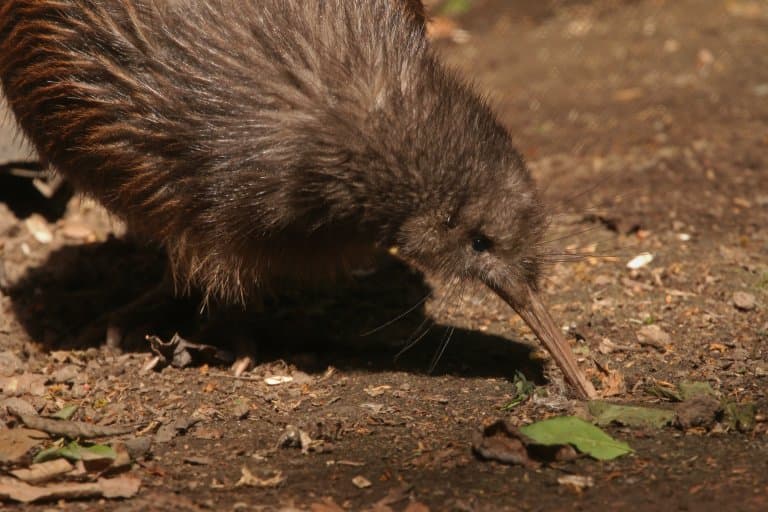
4. They have very low rates of metabolism
Kiwis don’t even metabolise quickly. They have the lowest metabolic rate of all birds. Ironically, eating kiwi fruit is said to boost your metabolism, but the same can’t be said for the bird. However, low metabolism can be a very useful thing, as they don’t need to eat as much and can conserve energy.
It’s also good for regulating temperature, and the kiwi’s unique, overlapping feather structure helps compensate for an inherently low body temperature.
5. They are the smallest of the flightless bird groups
They don’t even have size on their side.
Despite being related to the fierce and enormous ostrich (and the significantly larger and now extinct elephant bird, or Moa), these little birds commonly weigh under 3 kg.
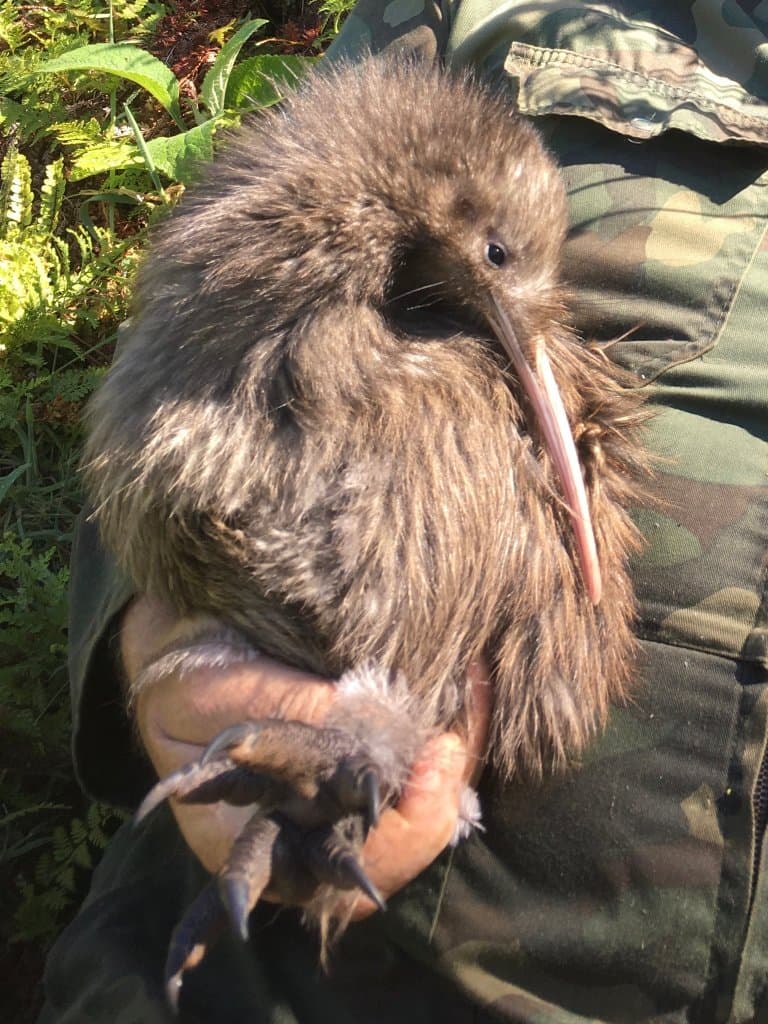
6. They are monogamous
Kiwi will couple up in a monogamous relationship which can last over 20 years.
During the mating season, they will call to each other at night and then meet every few days to mate.
Kiwi will then put in a lot of energy to incubate their eggs, which can take 80 days to hatch, which is twice as long as the typical bird gestation period.
7. They have the largest eggs in proportion to body size
Kiwi lay eggs about 6 times the size of an average chicken egg.
They have the largest egg-to-bodyweight ratio of the lot, with their eggs often weighing 15% of their body weight. This would be roughly the equivalent of a 70 kg mother giving birth to a 10 kg baby. Ouch. 2
This egg contains a huge amount of calorific yolk for the embryo to feed on, making brood care a breeze. Since the egg is so rich in nutrients, baby kiwis are born very advanced, covered in hair-like feathers and with their eyes open.
One week of nurturing, and they’re ready to feed themselves. 3
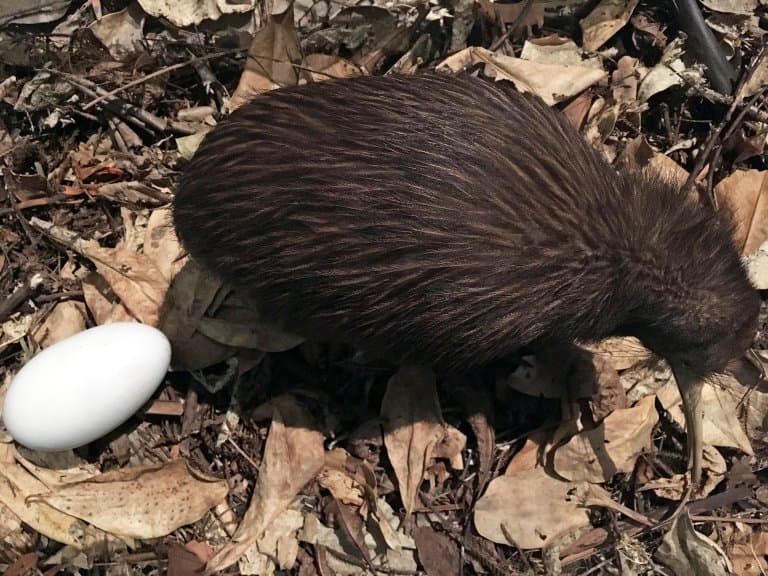
8. They have a great sense of smell
Kiwis have developed a keen sense of smell to compensate for their terrible vision and are the only bird with nostrils at the end of their beaks. They use this for feeding since they can’t focus well in the short range.
More recent research from Massey University PhD student Susan Cunningham has also suggested that kiwi have sensory pits at the tip of their beaks, which allow them to sense prey moving underground.
They typically feed for about five hours a day when incubating, and twice that when not. When threatened during a foraging mission, they run.
9. They’re agile
Somehow, despite many of the islands in the region being discovered by early humans perhaps even more than 100,000 years ago, New Zealand was mercifully spared by humanity all the way up to about 900 years ago.
Of course, as soon as that mistake was rectified, our species rapidly destroyed all the big animals like the gargantuan Moa, and plenty of the smaller ones, too.
Still, Kiwis have so far evaded extinction, and therefore still stand a chance.
Their lack of tail and stumpy little wings make them look like a lumbering fruit, but these little birds are surprisingly quick when they need to be. Their agility and speed are what have kept them alive since humans colonised the islands.
Unfortunately, however, they’re in a lot of danger from the indirect effects of human presence. 4
10. Fewer than 6% of their chicks survive to adulthood
These poor little birds have a remarkably low survival rate. Each pair lays one egg per year, and even before hatching, there are hazards.
One study found that 68% of eggs never hatch, and at least 10% of these were due to predators. Overall, only 6% were expected to reach adulthood.
This represents a mortality rate of around 94%, and while this might be an acceptable margin in a well-balanced ecosystem, the islands of New Zealand are anything but stable.
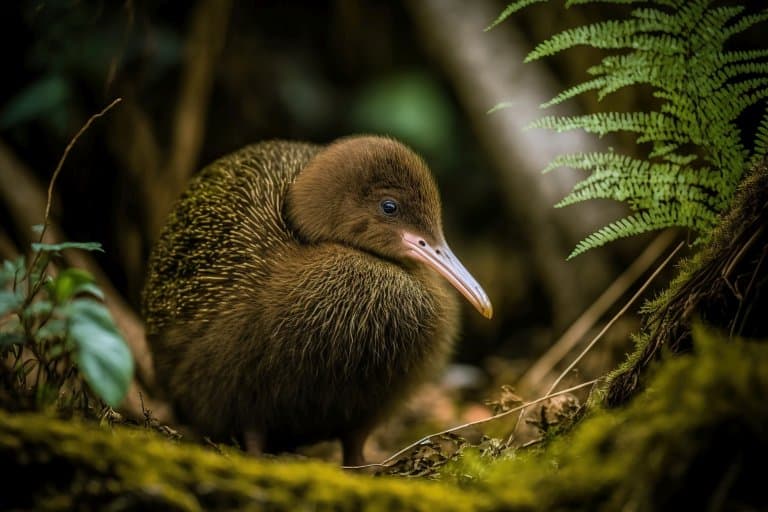
11. Introduced predators are the main reason for their decline
As mentioned, one study recorded predators as responsible for 10% of egg failures. Young kiwis are also vulnerable to predation and have been shown to kill at least 8% of chicks and 45% of juveniles.
It’s thought these invasive species could be killing 60% of all young kiwi birds.
Predators are a natural part of a balanced ecosystem, but in New Zealand, these predators are not native. Rats have been brought by ships, cats as pets by settlers, ferrets and stoats by hunters. This invasion of non-native predators threatens the natural balance and is pushing the kiwi birds toward extinction.
Populations are dropping almost 6% each year, and 4 species are already vulnerable, with the fifth catching up rapidly.
Without control methods to reduce predation, this agile little survivor kiwi stands a good chance of succumbing to the same fate as many of its relatives and peers. 5
Kiwi Fact-File Summary
Scientific Classification
| Kingdom: | Animalia |
| Phylum: | Chordata |
| Class: | Aves |
| Order: | Apterygiformes |
| Family: | Apterygidae |
| Genus: | Apteryx |
| Species Names: |
Apteryx haastii (Great spotted kiwi) Apteryx owenii (Little spotted kiwi) Apteryx rowi (Okarito brown kiwi) Apteryx australis (Southern brown kiwi) Apteryx mantelli (North Island brown kiwi) |
Fact Sources & References
- Brian McNab (1996), “Metabolism and Temperature Regulation of Kiwis (Apterygidae“, Victoria University of Wellington, New Zealand.
- James Sales (2005), “The endangered kiwi: A review“, ResearchGate.
- Sarah Burhouse (2016), “Why Do Kiwis Produce Massive Eggs?“, Leeds Museum.
- “The Kiwi Bird“, Kiwi Web Chemistry & New Zealand.
- J.A. McLennan et al (1996), “ROLE OF PREDATION IN THE DECLINE OF KIWI, APTERYX SPP, IN NEW ZEALAND“, Department of Conservation New Zealand.
